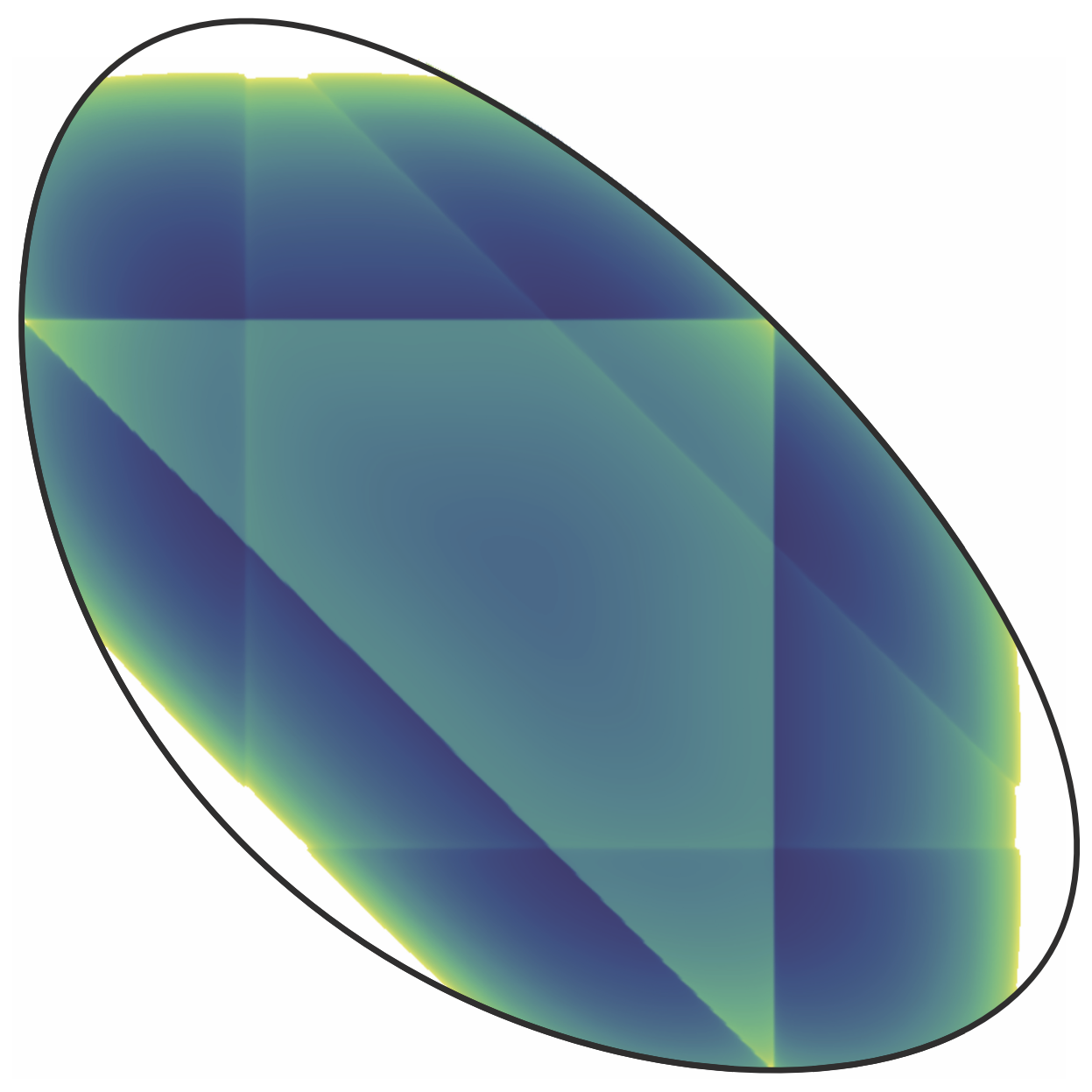
|
Phys.Rev.Lett. 126 (2021) 012001
For the first time in lattice QCD, a three-hadron scattering
amplitude has been determined using a general workflow that does not
make use of model assumptions or a perturbative expansion. Focusing
on the maximum isospin three-pion channel ($\pi^+ \pi^+ \pi^+ \to
\pi^+ \pi^+ \pi^+$) the calculation uses a relativistic finite-volume
formalism to relate lattice energies to the physical scattering
amplitude. The work has been published in Phys.Rev.Lett. as an Editor’s Suggestion.
|
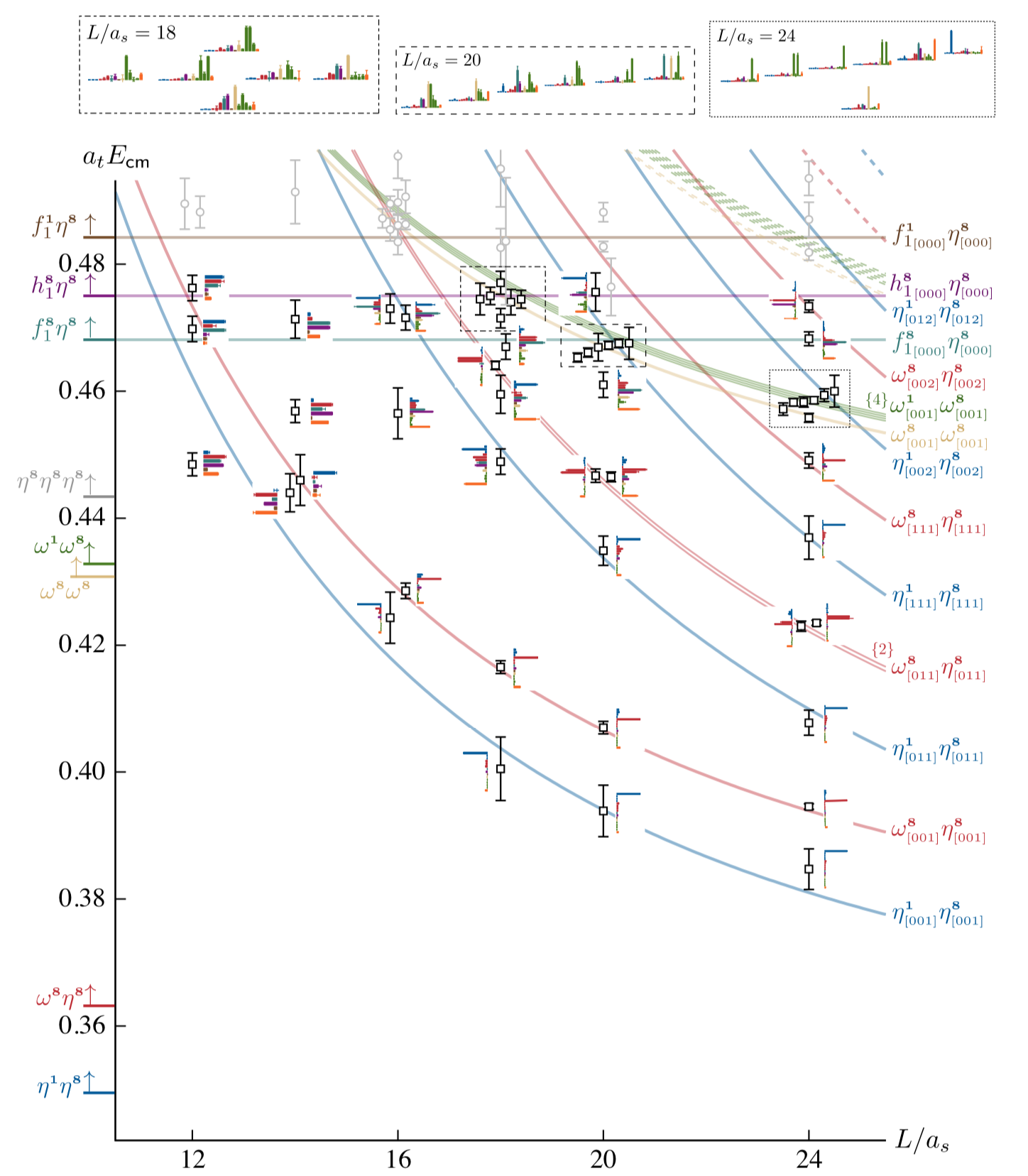
|
Phys.Rev.D 103 (2021) 5, 054502
For the first time in lattice QCD, a calculation has shown the
presence of an exotic $1^{-+}$ state appearing as an unstable
resonance. The result shows that the longstanding model-based
proposal that such a state would couple more strongly to the $\pi
b_1$ final-state than the lower-lying $\pi \eta, \pi \eta'$ and $\pi
\rho$ final-states is confirmed. Possible implications for the
recently observed $\pi_1$ experimental candidate state are discussed.
|
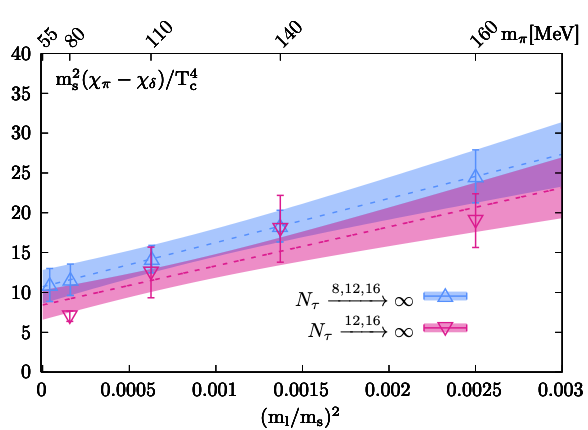
|
Phys. Rev. Lett. 126, 082001 (2021)
We introduce novel relations between derivatives of the Dirac eigenvalue spectrum with respect to the light sea quark mass and the $(n+1)$-point correlations among the eigenvalues of the massless Dirac operator. Using these relations we present LQCD results for the derivatives at light pion masses and at a temperature of about 1.6 times the chiral phase transition temperature. We find that eigenvalue density develops a peaked structure. We demonstrate that this phenomena is responsible for the manifestations of axial anomaly in two-point correlation functions of light scalar and pseudoscalar mesons. After continuum and chiral extrapolations we find that axial anomaly remains manifested in two-point correlation functions of scalar and pseudoscalar mesons in the chiral limit.
|
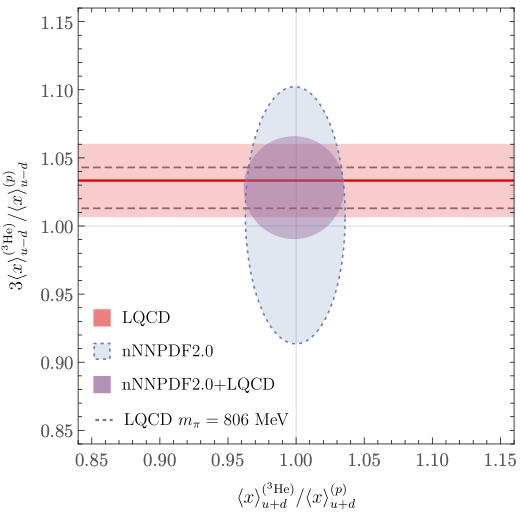
|
arXiv:2009.05522
The fraction of the longitudinal momentum of $3^{}{\rm He}_3$ that is carried by the isovector combination of $u$ and $d$ quarks is determined using lattice QCD for the first time.
The ratio of this combination to that in the constituent nucleons is found to be consistent with unity at the few-percent level from calculations with quark masses corresponding to $m_\pi\sim 800$~MeV, extrapolated to the physical quark masses.
This constraint is consistent with, and significantly more precise
than, determinations from global nuclear parton distribution function
fits. Including the lattice QCD determination of the momentum
fraction in the nNNPDF global fitting framework results in the
uncertainty on the isovector momentum fraction ratio being reduced by
a factor of 2.5, and thereby enables a more precise extraction of the
$u$ and $d$ parton distributions in $3^{}{\rm He}_3$.
|
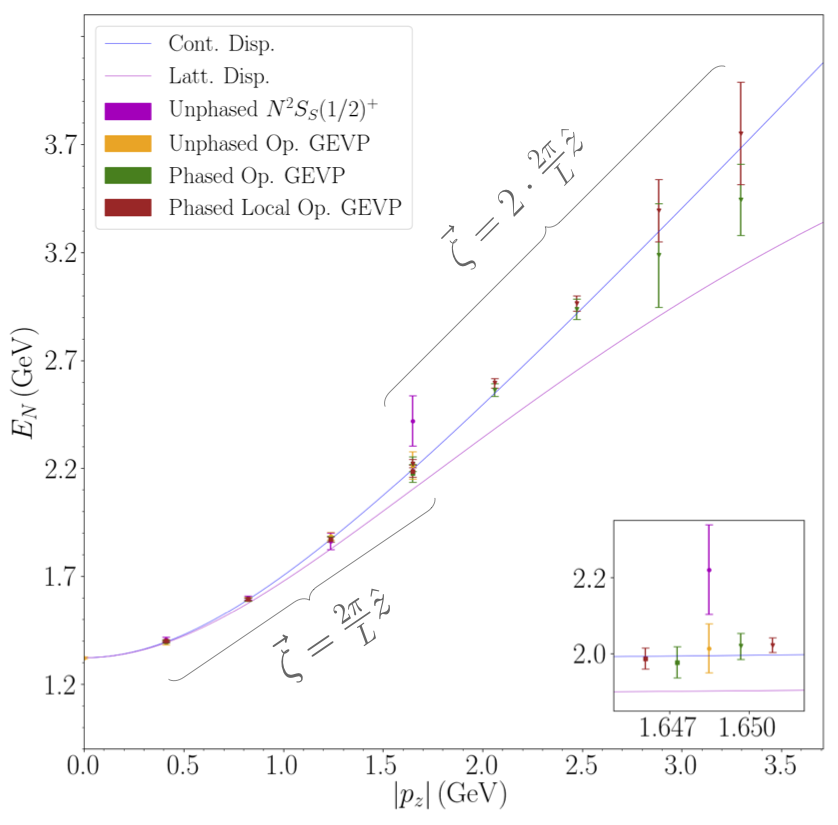
|
Phys.Rev.D 103 (2021) 3, 034502
Extraction of hadronic observables at finite momenta from LQCD is constrained by the well-known signal-to-noise problems afflicting all such LQCD calculations. In this work we extend the idea of momentum-smearing by exploring modifications to the distillation framework. Together with enhanced time slice sampling and expanded operator bases engendered by distillation, we find ground-state nucleon energies can be extracted reliably for $\vec{p}\le 3$ GeV and matrix elements featuring a large momentum dependence can be resolved.
|
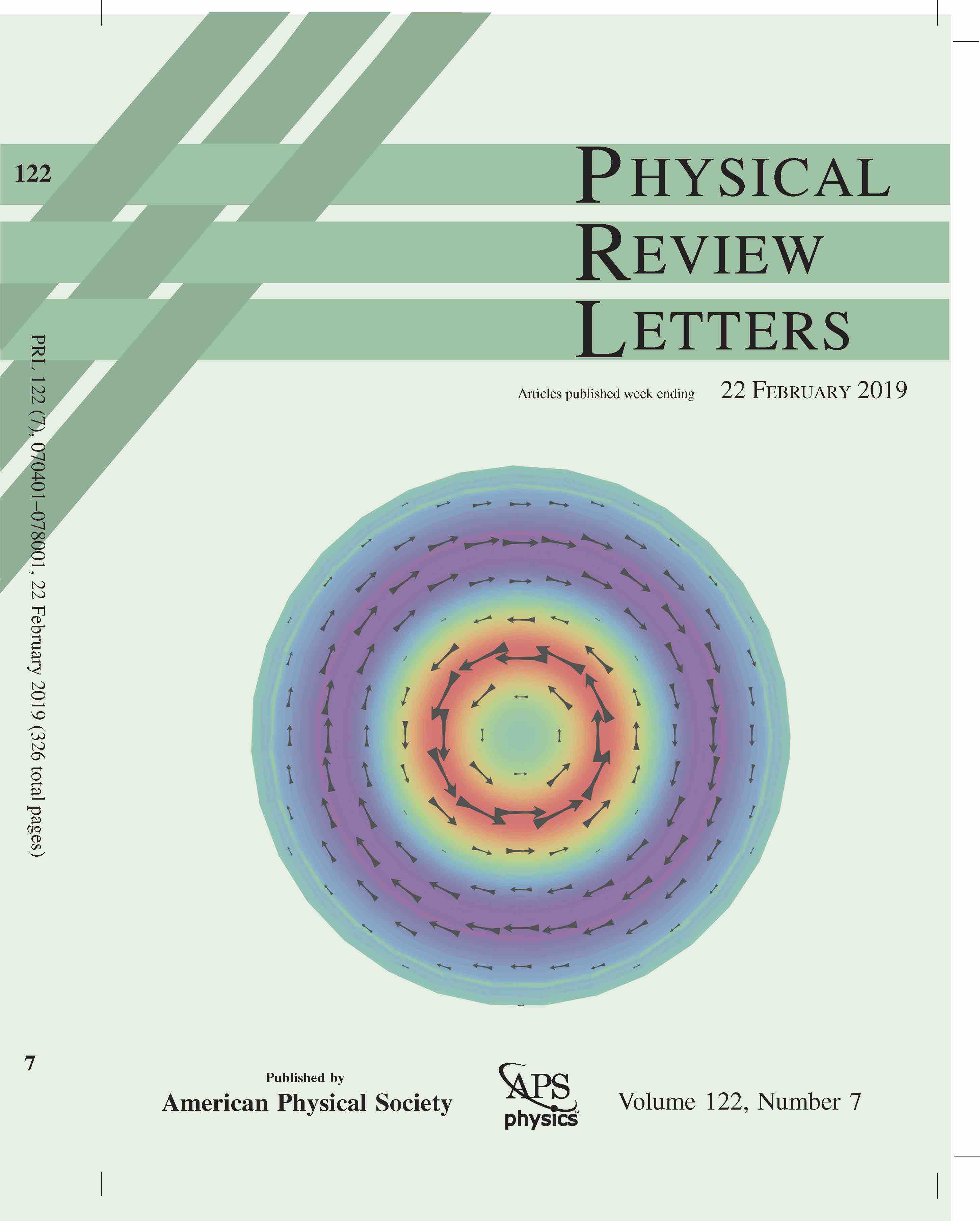
|
NERSC Highlight, 2019-07-08
For the first time, lattice QCD calculations run at NERSC
allowed nuclear physicists to determine the pressure
distribution inside a proton, taking into account the
contributions of the proton’s fundamental particles: quarks and
gluons. This discovery brings nuclear scientists closer to a
complete understanding of a proton’s structure and the
fundamental particles that make up most of the visible matter in
the universe.
|
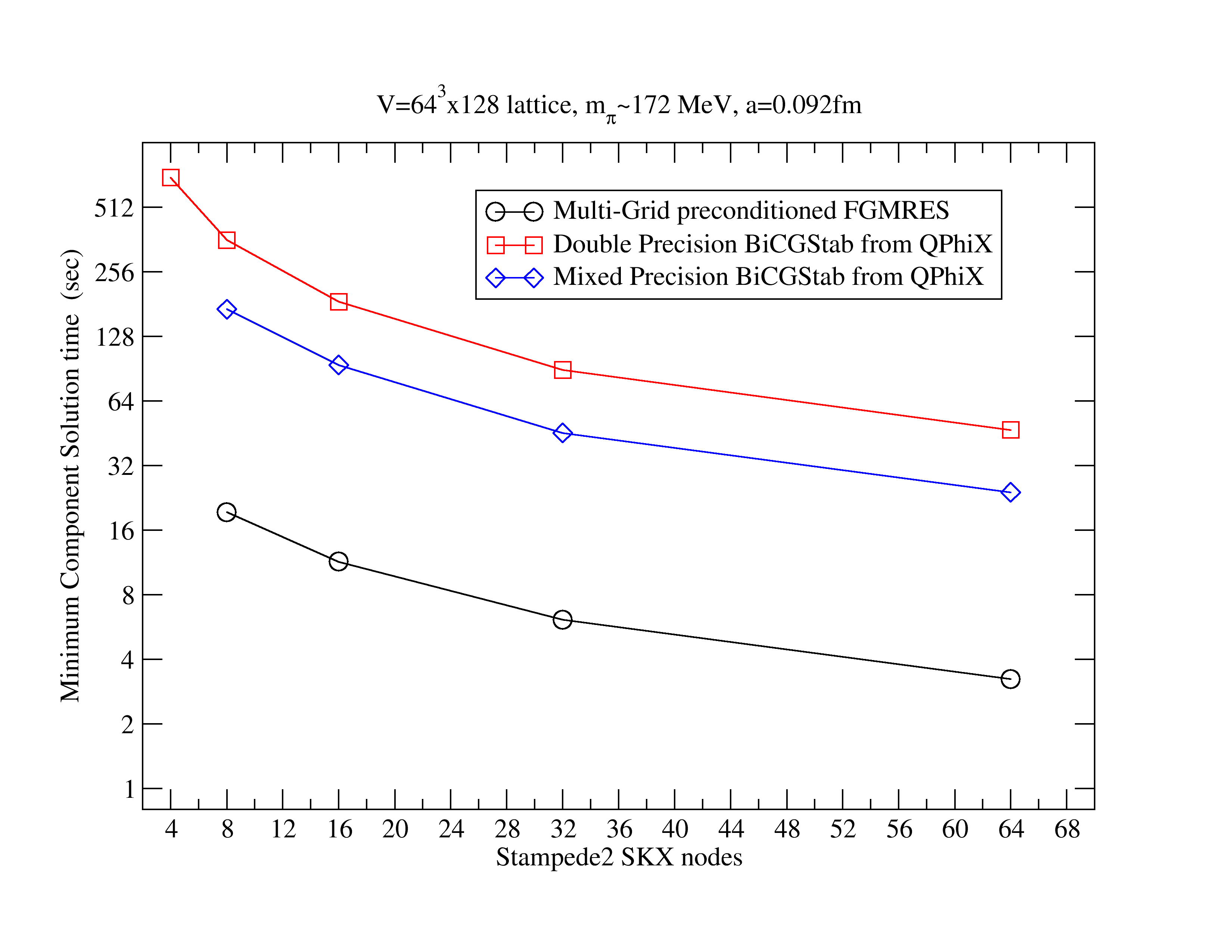
|
SciDAC-4 Highlight, 2019-05-16
A new multi-grid implementation for x86 architectures with supporting AVX512 instructions, such as
Intel Xeon Phi Knight's Landing, and Xeon Servers (Skylake and beyond) speeds up calculations by 7x-8x
accelerating calculations on platforms such as NERSC Cori KNL, ALCF Theta, TACC Stampede 2 and the
Jefferson Lab SciPhi Cluster.
|

|
OLCF Highlight, 2018-09-17
The accelerated architecture of America’s fastest supercomputer boosts QCD simulations
|
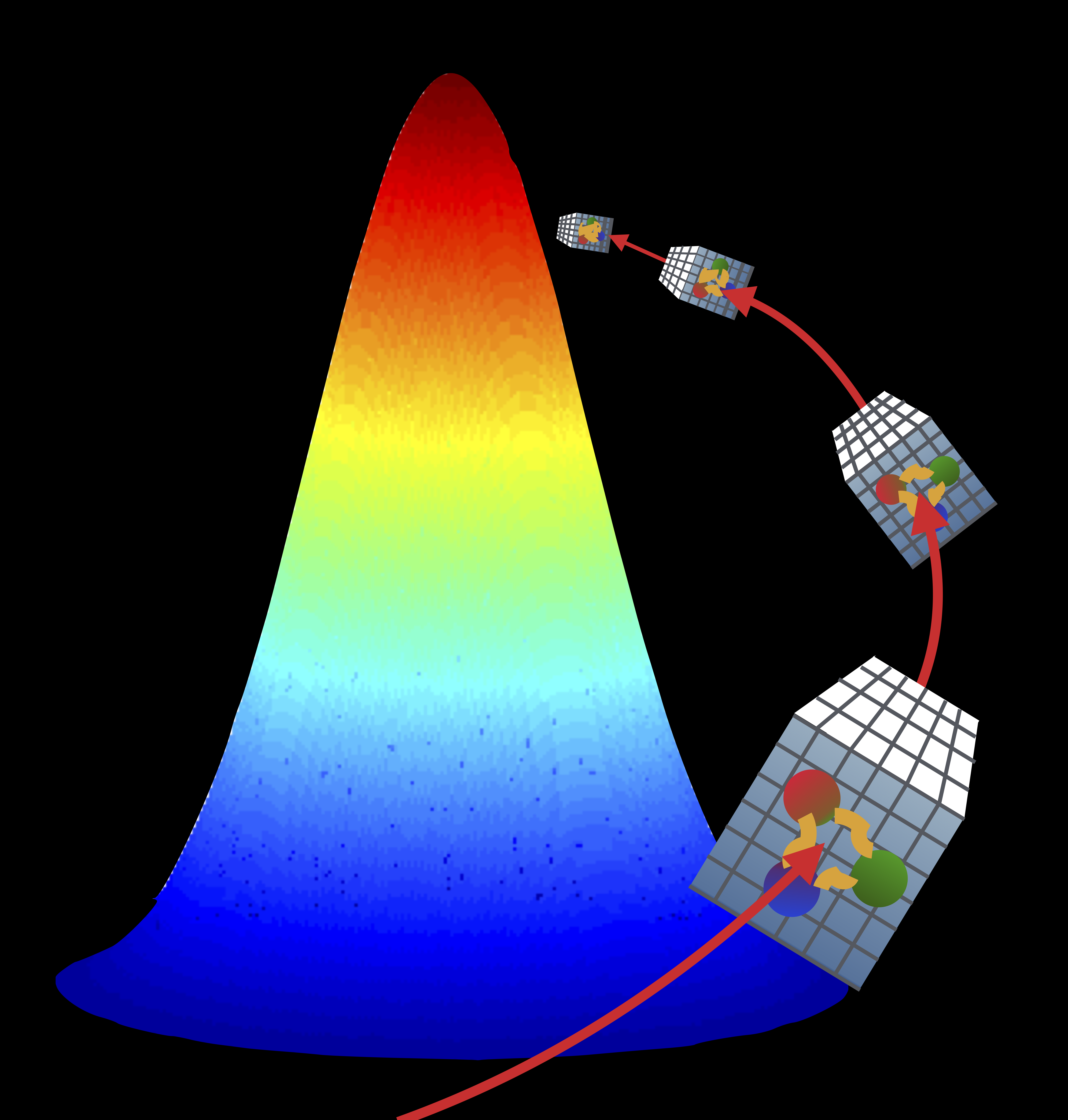
|
SciDAC-4 Highlight, 2018-05-01
The generation of gauge configurations (samples of the strong force
field in the vacuum) is the gating first step of nuclear and
high energy physics calculations using lattice quantum
chromodynamics (LQCD) generating the data on which subsequent
calculations depend.
Here, we demonstrate a 73x reduction in the GPU-hours required for the generation of such gauge fields
moving from Titan to Summit, and incorporating new algorithms
well suited to the new system. The improvement on Summit enables calculations which where hitherto considered out-of reach for reasons of computational cost, and will fundamentally re-shape how we will conduct our scientific campaigns in the future.
|
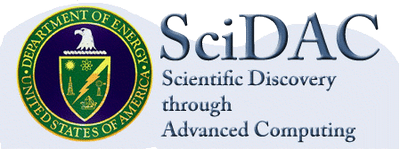
|
Jefferson Lab Highlights, 2017-10-11
Jefferson Lab leads development of next-generation software to benefit
nuclear physics computation. An award was recently announced by DOE’s Office of Nuclear Physics and the Office of Advanced Scientific Computing Research in the Office of Science. It will provide $8.25 million for the “Computing the Properties of Matter with Leadership Computing Resources” research project.
|
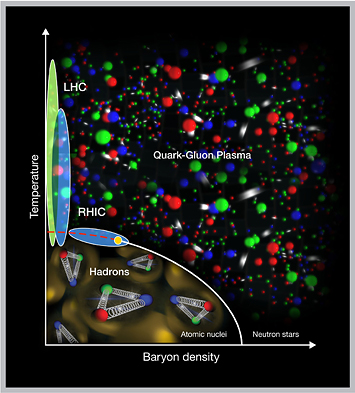
|
Brookhaven National Lab Features, 2017-10-18
Scientists to develop next-generation computational tools for studying interactions of quarks and gluons in hot, dense nuclear matter
|










